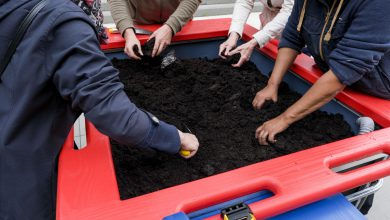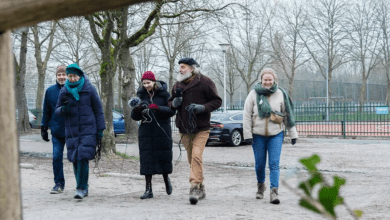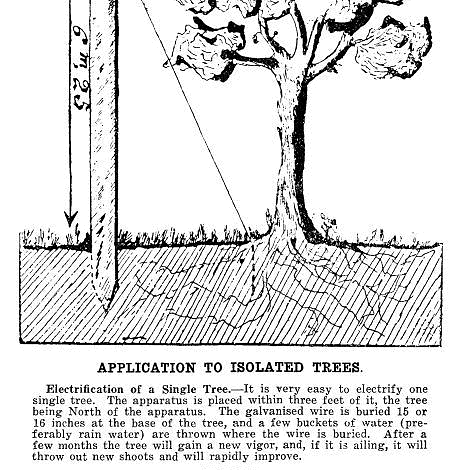
I visited Theo Mulder of Mulderagro in Groningen last weekend and it was again delicious food for thought. Theo talked about copper tools and electrical culture. The concept was not unfamiliar to me, but when I got home, I wanted to know more about it. I love applying back or reviving knowledge from the past. If you can also make your plants healthier with it then, of course, that’s a nice bonus.
The phenomenon is as old as the street some would say. But if you delete the words from the dictionary they are no longer talked about.
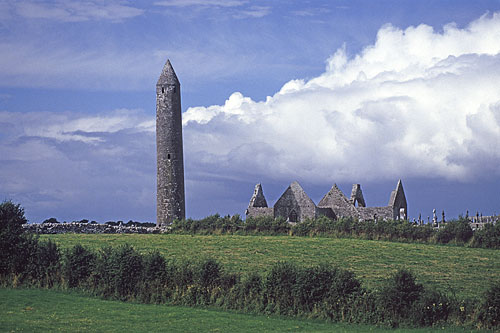
One scientist discovered, for example, that the grass around these towers grew better in Ireland. ‘A healthy soil is paramagnetically charged,’ said American researcher Philip Callahan. In that extremely weak force we call paramagnetism today, according to
him also a key to the secret of the many dozens of round Irish towers.
In the 1920s, electroculture was a real science for stimulating plant growth and preventing disease through simple techniques that anyone could apply.
But the phenomenon is older than that. As early as 1749, Abbe Nollett, then in the 1920s Justin Christofleau and in the 1940s Viktor Schauberger experimented with these techniques.
The principle is simple. Using the energy present in the atmosphere, known as chi, prana, life force or ether, promotes plant growth and yield without depleting the soil. But this allows farmers to reduce chemical and fertilizer use and increase crop yields. Which, of course, is less fun for the pharma industry. Perhaps that is why the term was also dropped from the dictionaries and is no longer recognized as a science. The pressure to dismiss it as “too expensive” in recent research is sheer nonsense told Yannick Van Doorne.
From music and its influence on plant growth to electroculture expert.
Yannick Van Doorne grew up in Geraardsbergen and studied as an agricultural engineer at the University of Ghent. When he wanted to do his thesis on the influence of music on plant growth, it did have some issues, not to mention censorship. The results were striking and could not be denied. He spent years trying to convince academia to do more research on this, but these kinds of solutions don’t always fit into an economic system where selling “products” is the norm. But perhaps there is a turnaround because meanwhile the Chinese are also eagerly using music to grow plants.
In any case, the lack of interest in academia was not a reason for Yannick to give up his quest for more knowledge and do more research. Meanwhile, he is a real authority when it comes to “electroculture” and is asked to lecture at home and abroad.
Yannick Van Doorne speaking. With tips and tricks for those who want to get started themselves.
To live without bird calls is to live in the desert.
We live in a desert when you talk about bird population loss, Yannick tells us. The chirping of birds does have its uses in nature. Then when you play Baroque music in a vineyard, for example, you immediately see the impact of that “energy” because that’s what it’s about. Not about the sound but about the “energetic effect.
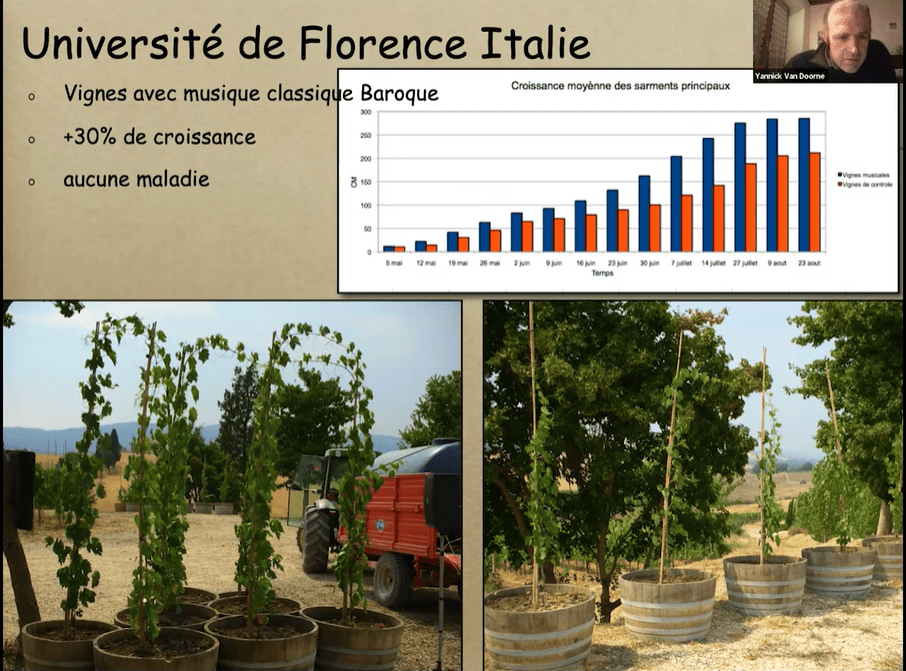
From basalt columns based on Irish towers to simple antennas made of copper that you can make yourself.
But it can be even simpler than music in the garden. By channeling the energy of the sun and the earth, you can stimulate your plant growth. Atmospheric antennas are made of materials such as wood, copper, zinc and brass and can be used to increase yields, reduce irrigation, prevent frost and excessive heat, reduce pests and increase soil magnetism, leading to more nutrients in the long run.
These antennas pick up frequencies that are all over the place and helps increase magnetism and sap, the plant’s blood. The antenna harvests energy from the earth through the range of vibrations and frequencies, such as rain, wind and temperature changes. These antennae lead to stronger plants, more soil moisture and fewer pests.
Moreover, copper/brass/bronze tools have been shown to be more beneficial to the soil than those made of iron. Copper tools lead to high-quality soil, require less work when used and do not alter the magnetism of the soil. Iron implements, on the other hand, reduce the magnetism of the soil, make farmers work harder and can cause drought-like conditions. You can buy copper tools from Theo Mulder of Mulderagro. Highly recommended by the way.
You have two different forms of electroculture. A passive form or an active form where you then use small amounts of electricity to increase the effect.



Still not convinced? Then take a look at the video below


